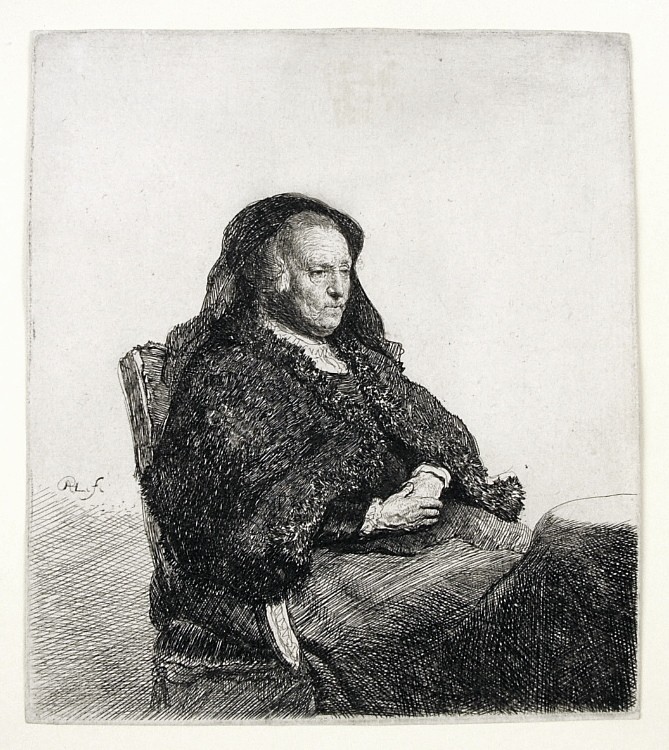The Artist’s Mother Seated at a Table Looking Right: Three-Quarters Length

Rembrandt Harmensz. Van Rijn (1606-1669), The Artist’s Mother Seated at a Table Looking Right: Three-Quarters-Length, etching, c. 1631 [signed in the plate left]. References: Bartsch, Hollstein 343, Hind 52. White Boon II (of III), before the plate was cut down to an oval. In very good condition, with thread margins; faint stain upper edge, minor thin spot lower left corner reverse, 150 x 133 mm; 5 15/16 x 5 1/4 inches, archival matting.
A fine early example, with the exquisite detailing of the face and hands especially distinct, and the extensive etching and cross-hatching lines on her fur-trimmed coat, headscarf and chair black and clear.
Provenance: Kupferstichkabinett det Staatliche Museen, Berlin (L. 1633), with sale stamp (L. 2482)
ex Collection: Adam Gottlieb Thiermann, Berlin (Lugt 2434)
The first state of this print is known in only one impression, in Amsterdam. In the second state Rembrandt added lines strengthening the shadows to the left and under the chair.
Erik Hinterding (Rembrandt The Printmaker) has illuminated the stages Rembrandt traversed in creating this print. He must have started with the head, creating the details from life directly onto the plate; then added the rest of the figure later. It is apparent that the scarf, for example, is more deeply bitten than the face, and appears darker. After completing the scarf, coat, skirt and chair he bit the plate in acid; later he added the table at the right. One can see that the table was added later because the figure of the skirt is still evident on the face of the table, but of course the table would hide the skirt if it were made at the same time. Rembrandt must have felt that the first state of the print was a bit unbalanced, however, with the dark table forcing the eye to the bottom right. So he added some lines darkening the shadows below and to the left of the chair; he did these in burin so he would not need to re-etch the plate. All this elaborate layering and detail is quite clear in an examination of this splendid impression.